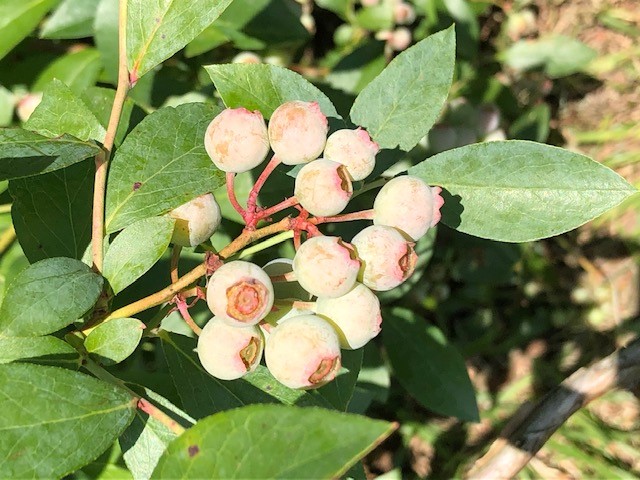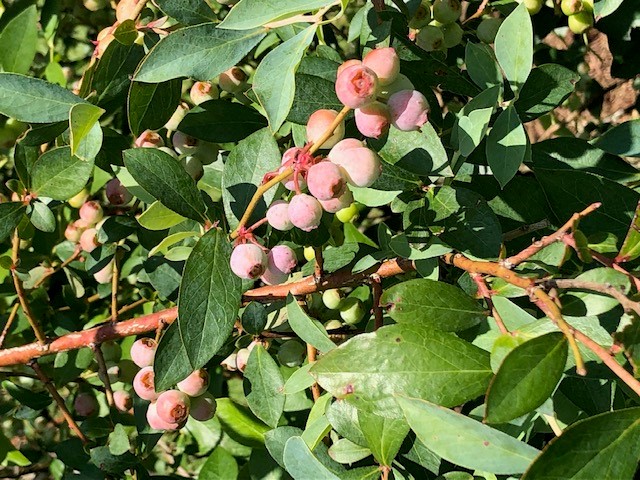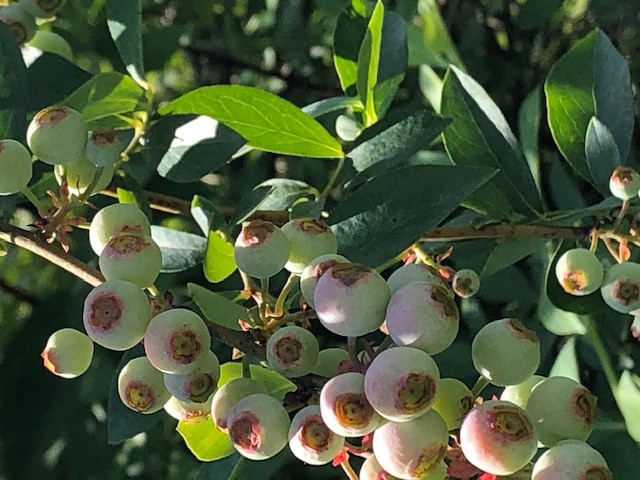
Photo Credit: Molly Z. 
Photo Credit Molly Z.
What better time than the bleak days of winter to think ahead to a brimming bowl of blueberries freshly harvested and still warmed from the sun right out of your home garden? Blueberries are a successful cash crop for Georgia farmers and an easily grown fruit for the home gardener, as well, with their minimal fertilizer needs, few pests, and easy adaptability and upkeep.
For our area, rabbiteye blueberries grow well and come in many varieties. A good selection of early, middle, and late season plants allows the gardener to extend the harvest season as well as select plants that are less likely to have their blooms harmed by a late winter freeze. Some that have been around for years and are tried and true are Climax, Tiftblue, and Brightwell; a couple of newer varieties to be on the lookout for are Titan and Pink Lemonade. The Titan blueberry was developed at UGA and has huge berries, often up to the size of a quarter. Pink Lemonade blueberries were developed by the USDA and offer deep pink sweet berries as well as a nice conversation piece for visitors to your garden! And if you haven’t yet started growing blueberries, you are in luck with the timing as you can still get them into the ground successfully through late winter. If blueberry growing interests you, please visit the following UGA Extension link to learn all the basics: https://extension.uga.edu/publications/detail.html?number=C946&title=Home%20Garden%20Blueberries.
For those already growing blueberries, winter offers time to rejuvenate your berry bushes to be ready for spring growth. This is the time to survey your plant to see if you have old branches that need to be cut out, provided your plants have reached a size of four to six feet. A good rule of thumb for mature bushes is to remove one to three large branches, or canes, each winter bringing them down to ground level or anywhere between the ground and 24 inches. If time has gotten away and pruning has been neglected for a few years, taller canes can be pruned back to six feet at this time also.
So, if you have a sunny spot in your yard or garden and you love both the taste of blueberries and the vitamin and antioxidant health benefits they offer, this might be the time to install a planting. An added benefit is the year round beauty they offer in the landscape. Of course, summer is their moment to shine, but with fall’s approach, the leaves turn a brilliant red. After the leaves fall, the twigs and branches can still maintain a hint of red at times and will begin swelling with buds as the winter days begin to wane, offering the promise of a summer harvest.
Go by your local extension office with a soil sample to see what you need to do to get your acid loving plants off to a good start, and then expect to reap healthy benefits for years to come with minimal effort.

Photo Credit: Molly Z. 
Photo Credit: Molly Z.
The author of this article, Molly Zablan, is a Paulding UGA Extension Master Gardener. Master Gardeners are trained to provide education for homeowners on horticulture, sustainable landscaping, and environmentally friendly gardening practices using unbiased, research-based information from the University of Georgia.